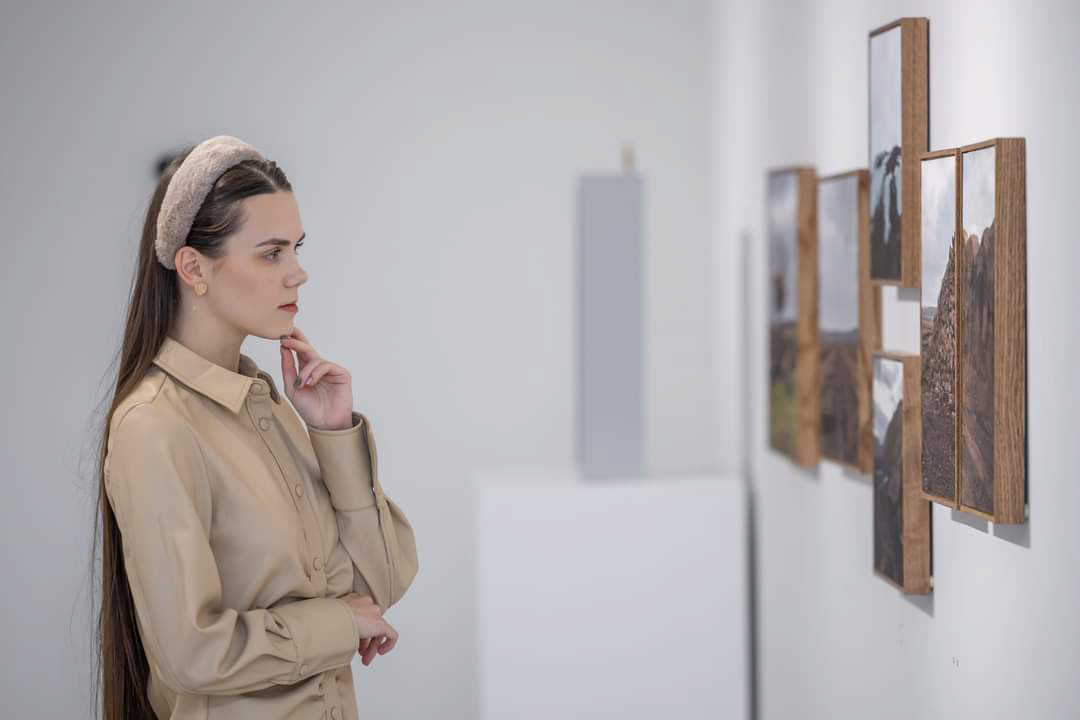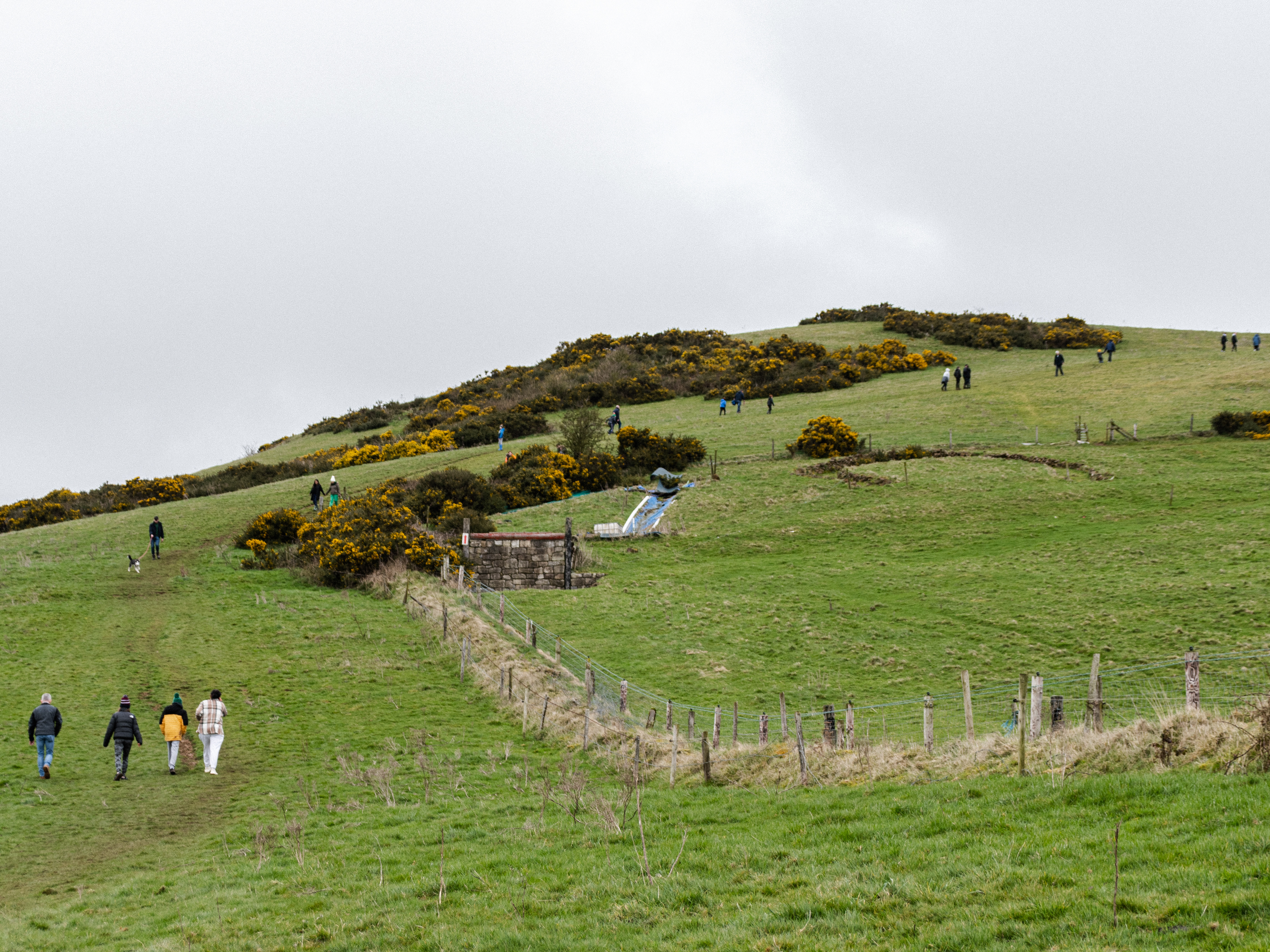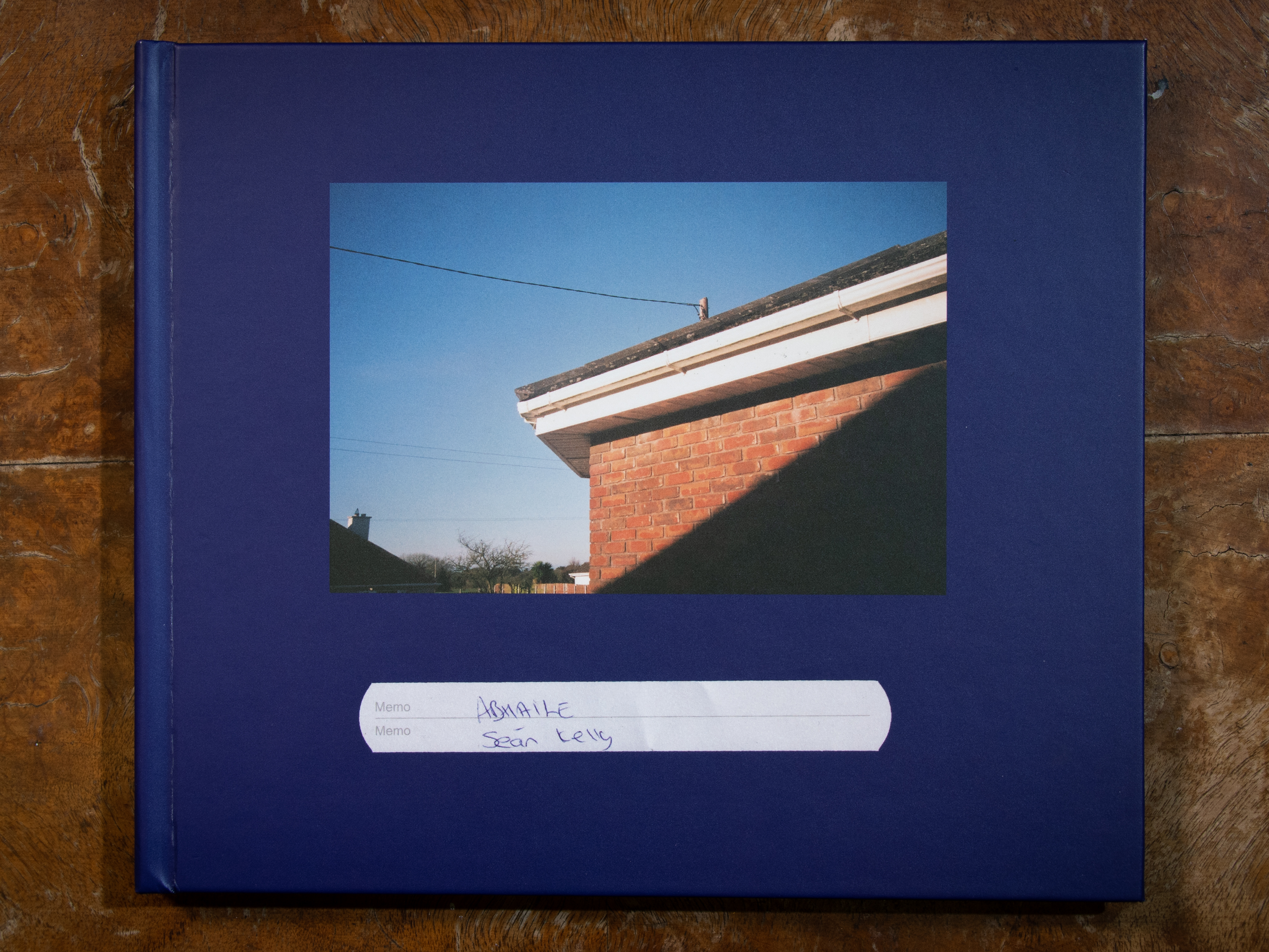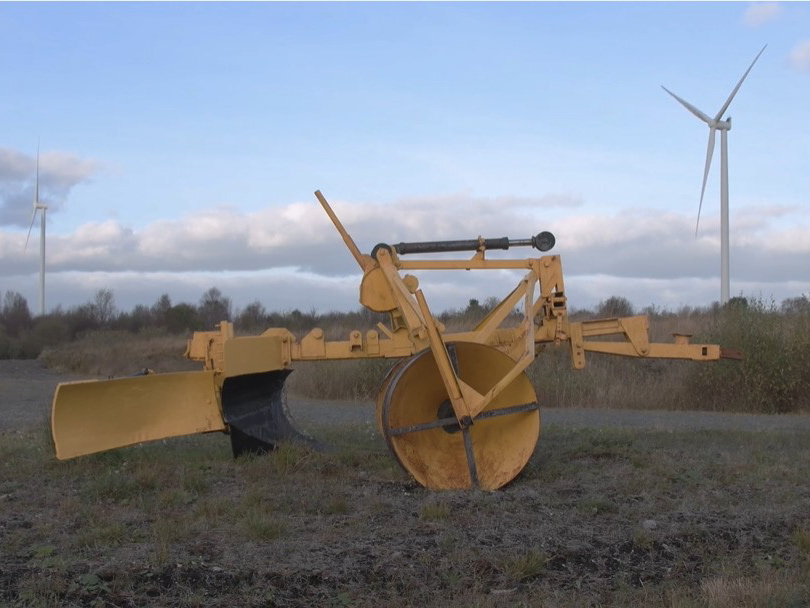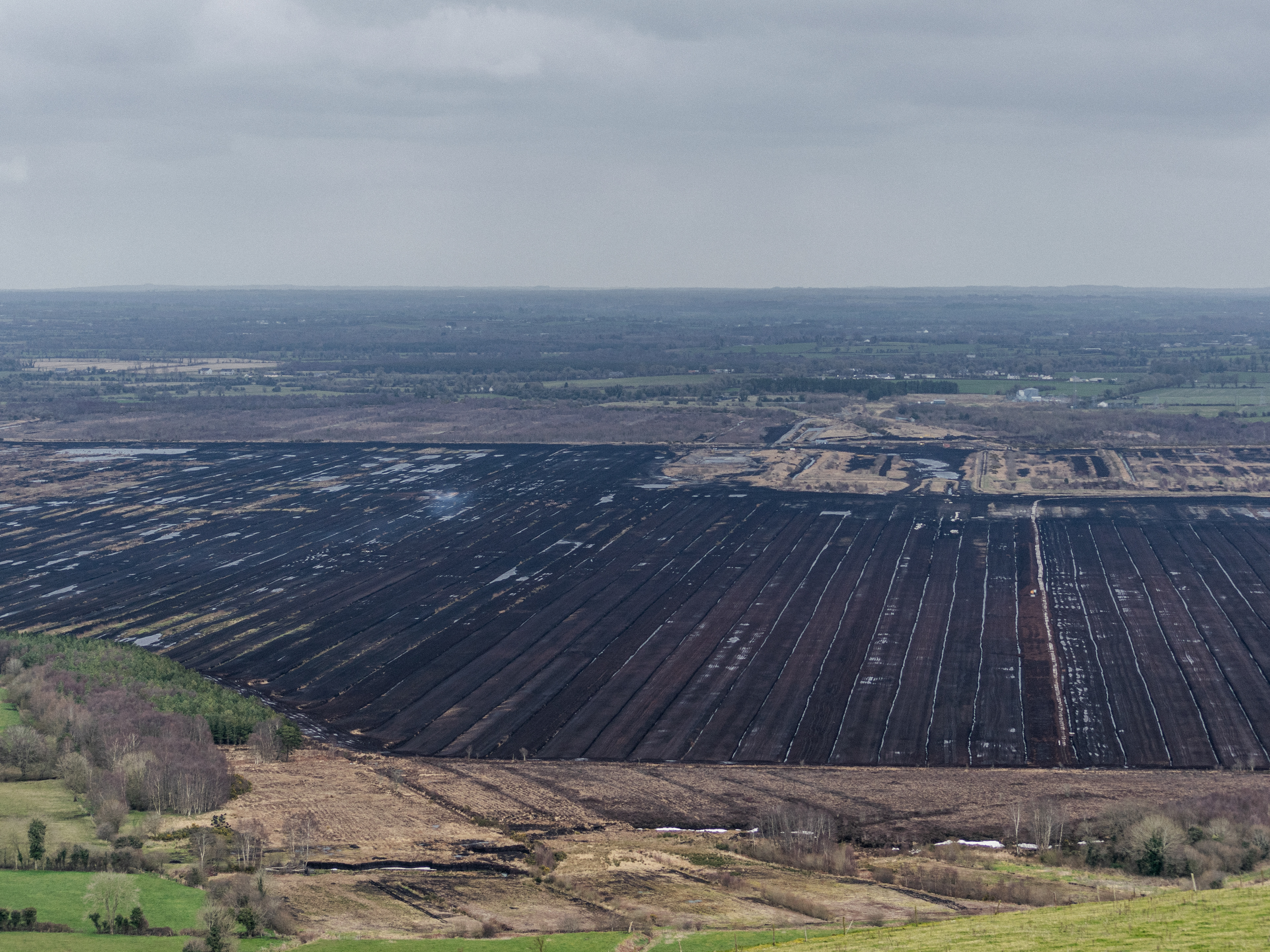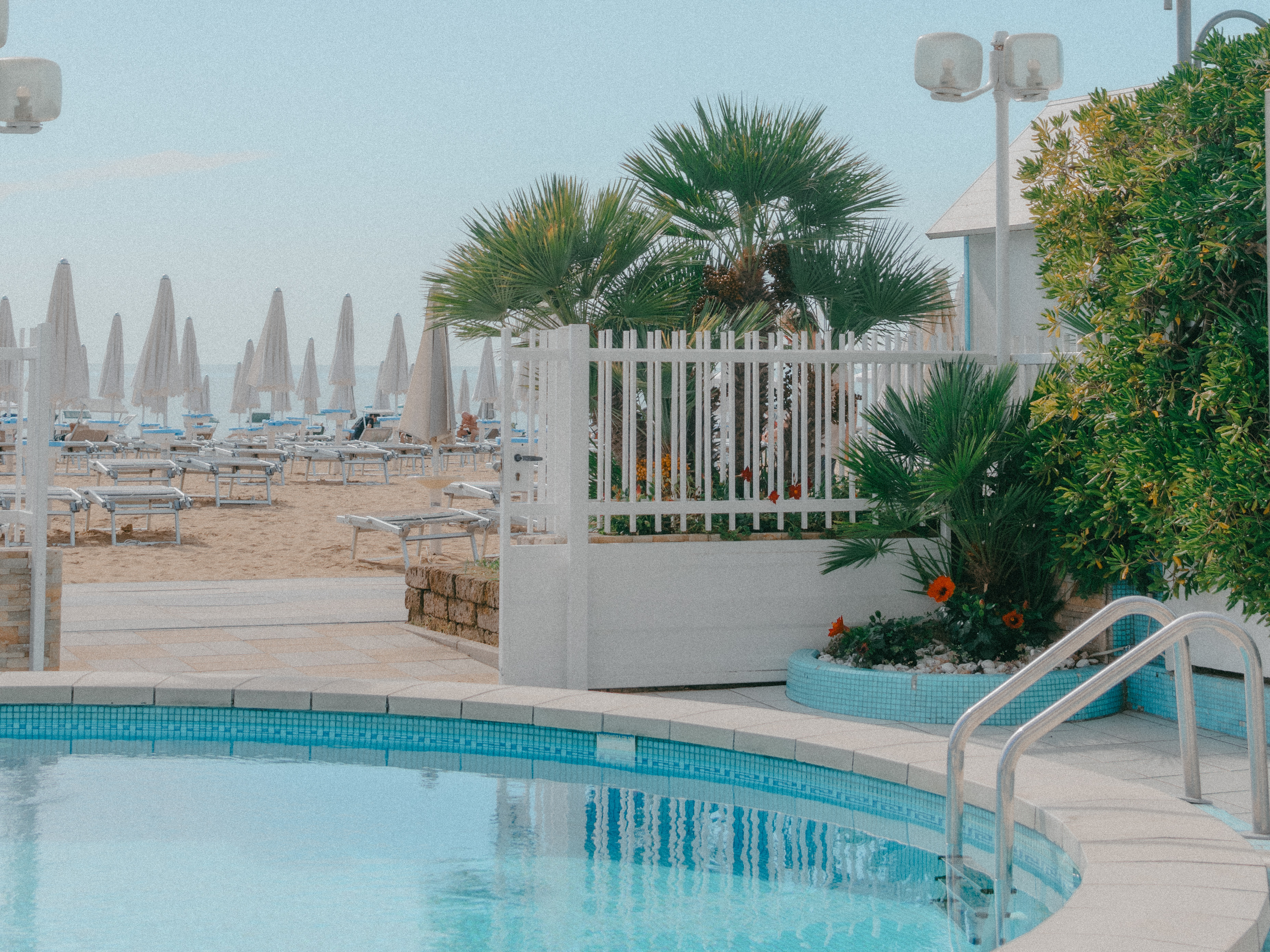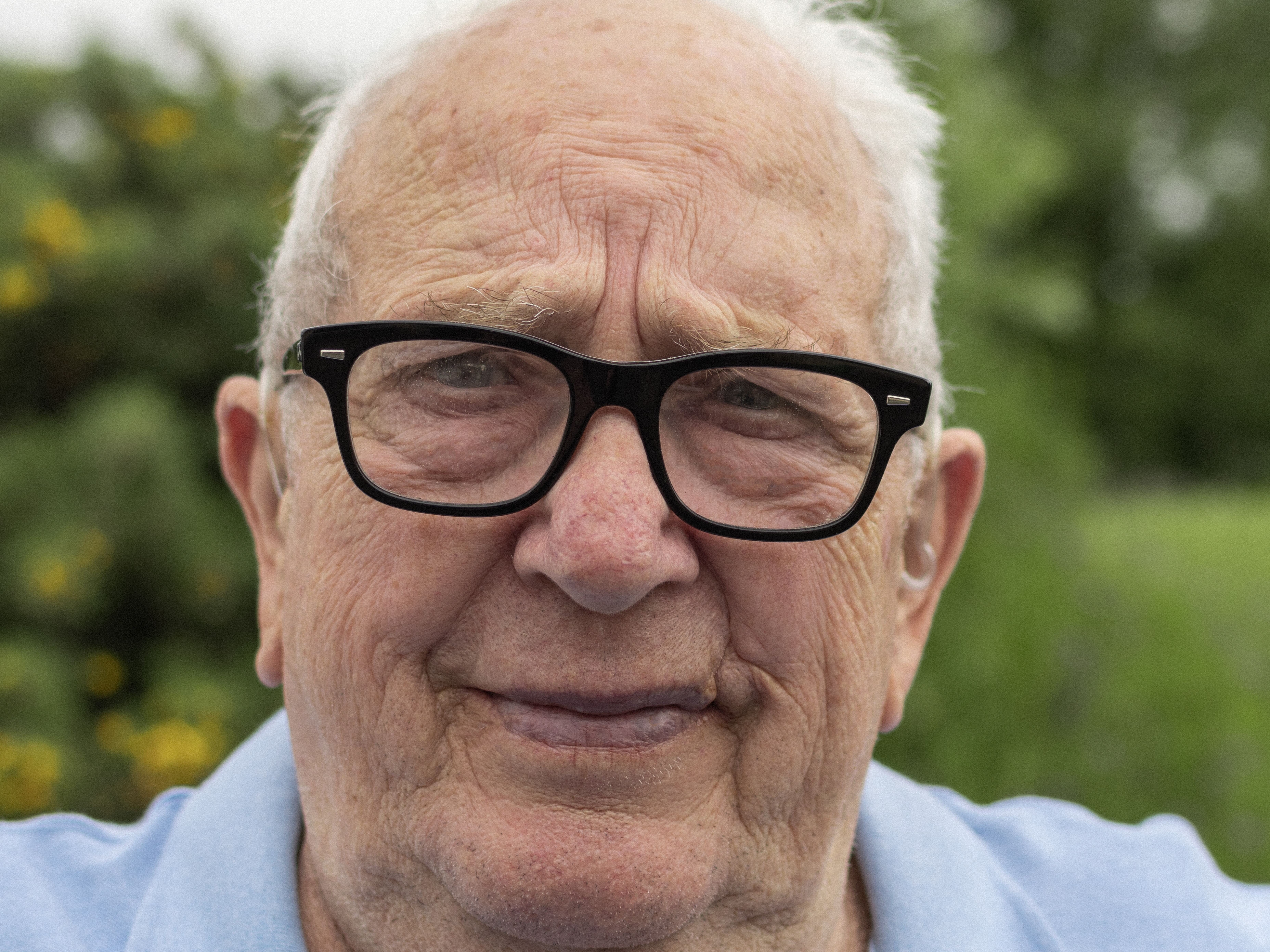My graduate project is the latest iteration of a wider long-term body of work that I started in the second year of my degree.
The Irish landscape is made up of 134 million hectares of bogland, equating to 16.2 per cent of the Island of Ireland. Peat, the fossil fuel making up this bogland, has been cut, dried and used as a fuel for centuries and while it has been essential for the survival of many rural Irish people, it has now become a problem in the age of the Anthropocene. When burned, peat (or turf as it is more colloquially known) releases carbon dioxide, which is contributing to climate change. For decades, environmentalists have been calling for a ban on turf cutting and now it looks certain to become a reality. In January of 2021, Bord na Móna (The Turf Board) permanently ended all of their peat-harvesting activities as part of their Brown to Green strategy. This would see the company transform from a harmful fossil fuel extraction company to a climate solutions company, completely changing their operations and permanently altering life in rural Ireland. Following this, there have been further turf cutting bans implemented by the Irish Government. Bord na Móna have been a vital employer for rural Ireland, this is a massive change for the Midlands and tensions are high as families and turf cutters fight to continue their traditional practices. My work has been examining the history and future of the Derrygreenagh Group of bogs and adjacent villages along the Offaly/Westmeath border. Previous bodies of work within the Derrygreenagh long-term project have examined the formation of Midlands bog towns and villages and remnants of infrastructure from the peat industry past, as well as future renewable energy infrastructure such as Bord na Móna’s windfarms built on harvested bogland. These previous iterations of the project didn’t examine the actual physical impacts of peat extraction on the bog landscapes. My graduate work finally looks at the boglands themselves, the harsh landscapes, the remnants of turf cutting, the final turf harvests, the large piles of milled peat. Alongside this work, my graduate thesis also contemplates the boglands debate, titled The Anthropocene in Ireland – What Role Can Photography Play in Ireland’s Turf Crisis. Full thesis is available at request.
https://onshow.iadt.ie/2023_student/sean-kelly/
https://www.source.ie/graduate/2023/iadtdunlba/iadtdunlba_student_22_17_01_11-05-23/iadtdunlba_student_22_17_01_11-05-23.php
Móna was shortlisted amongst 26 visual art graduate works in Ireland for the RDS Visual Art Awards, the most prestigious platform for visual art graduates in Ireland.
Móna was exhibited as part of "It's All Downhill From Here" IADT BA (Hons) Photography Graduate Exhibition 2023 and Offaly Artists Show 2023 at Esker Arts Centre Tullamore

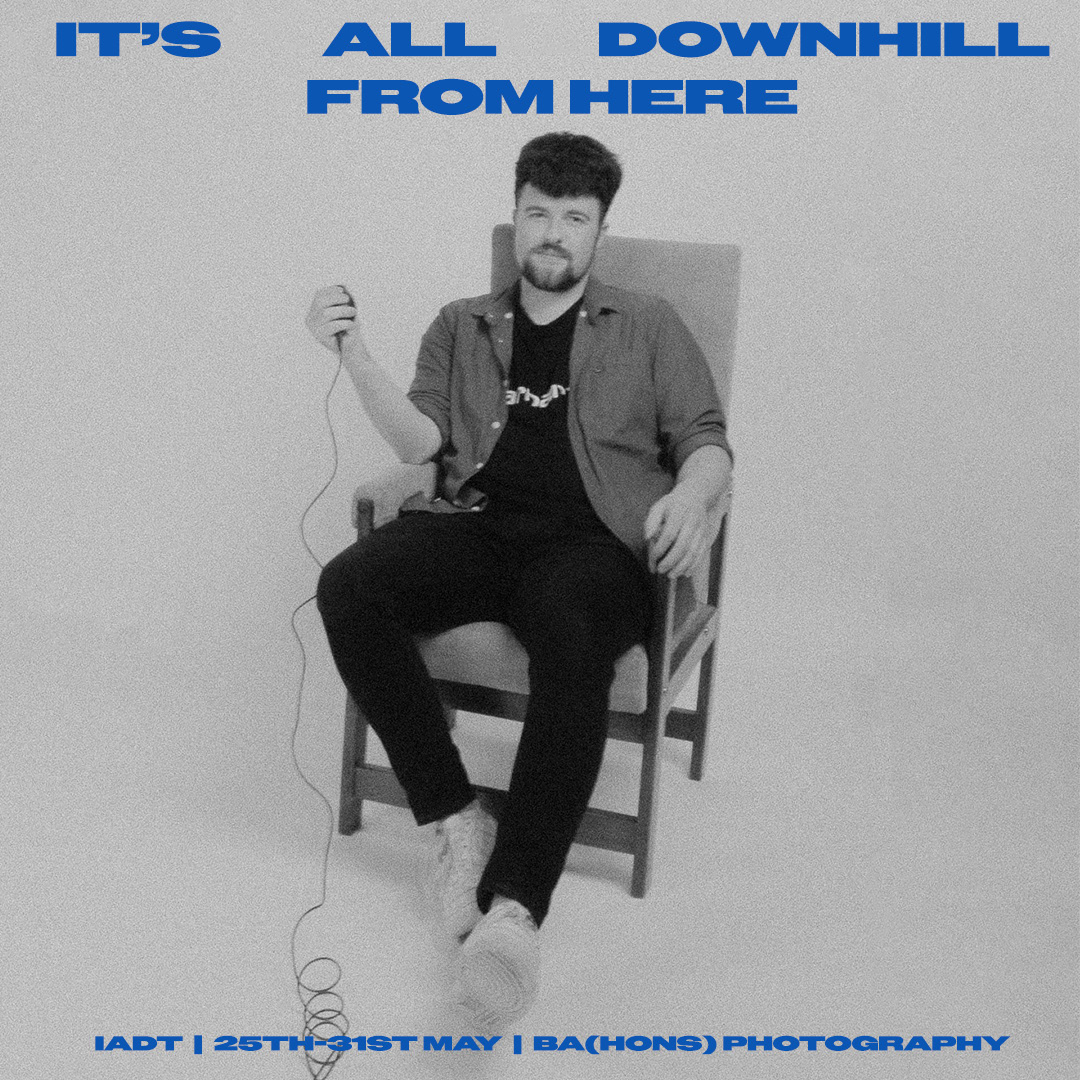
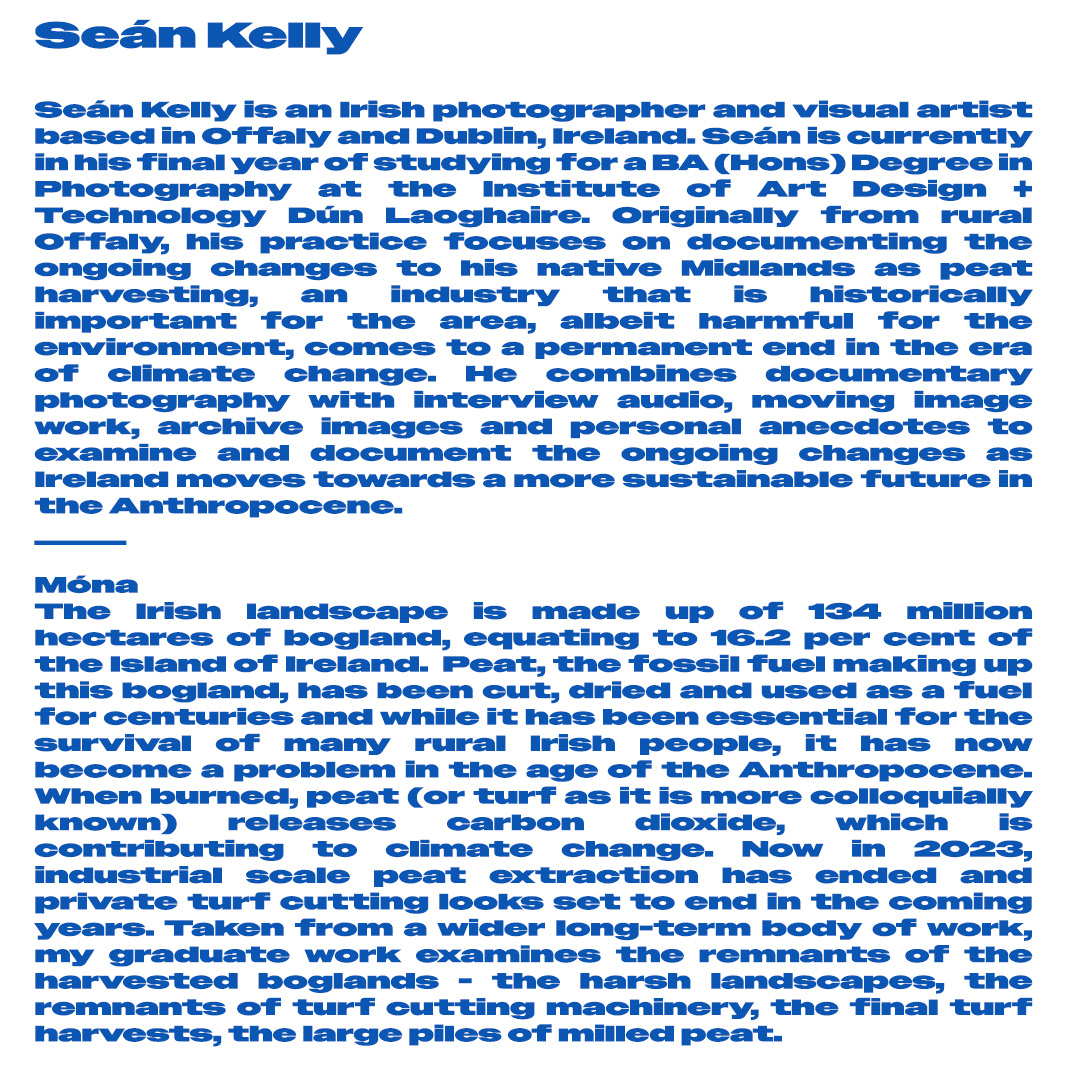
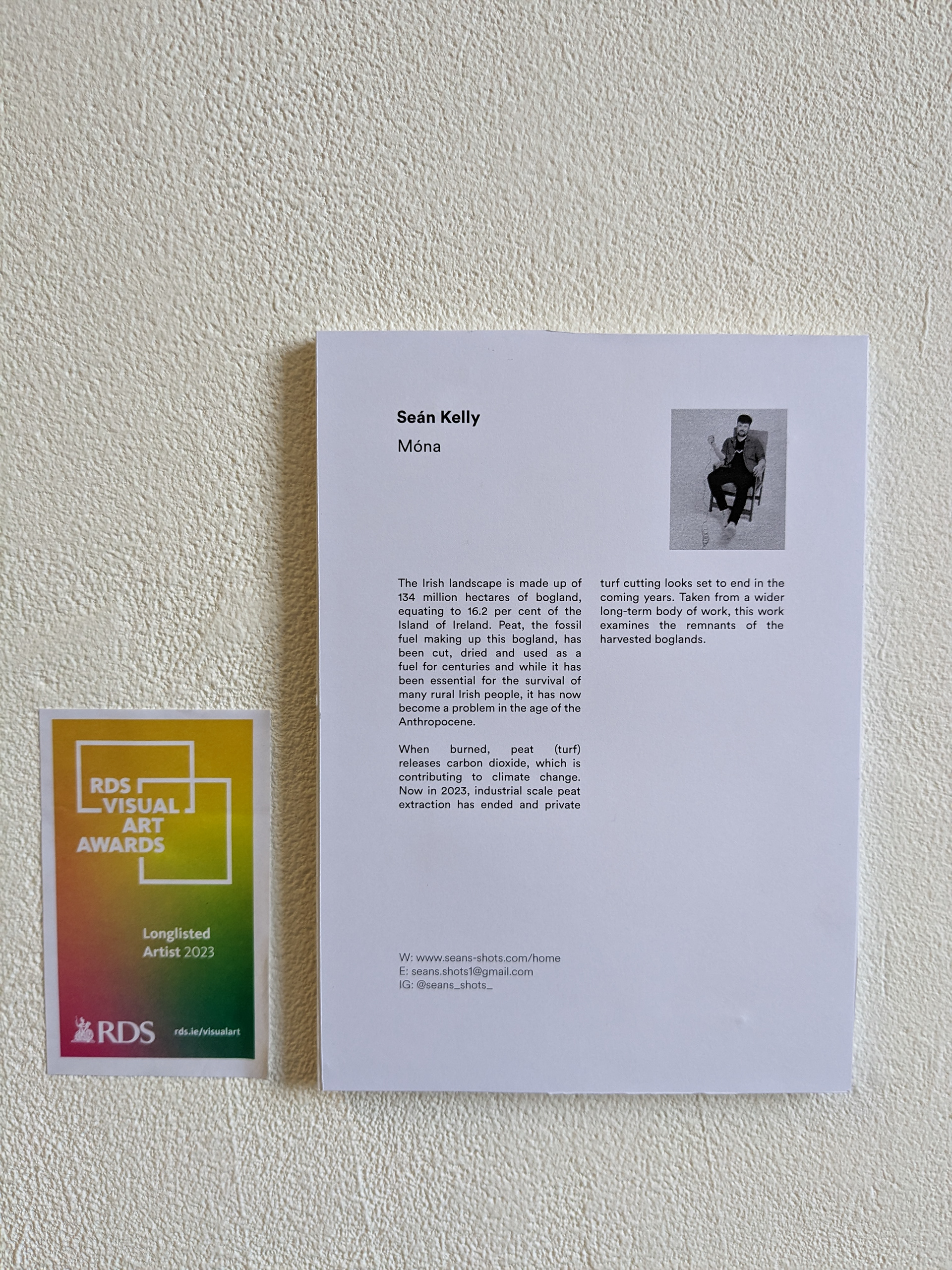

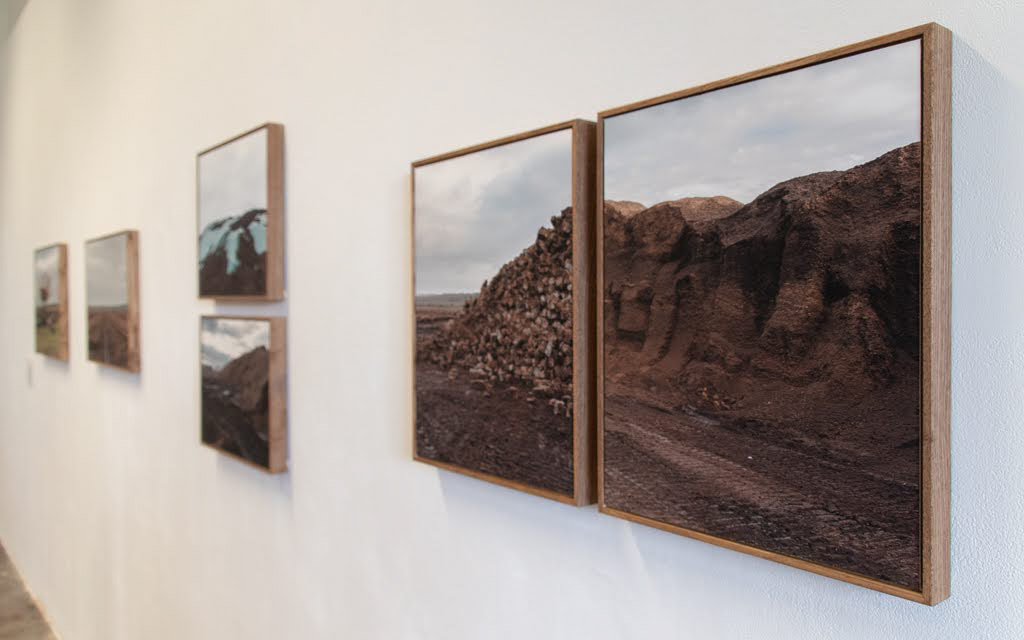

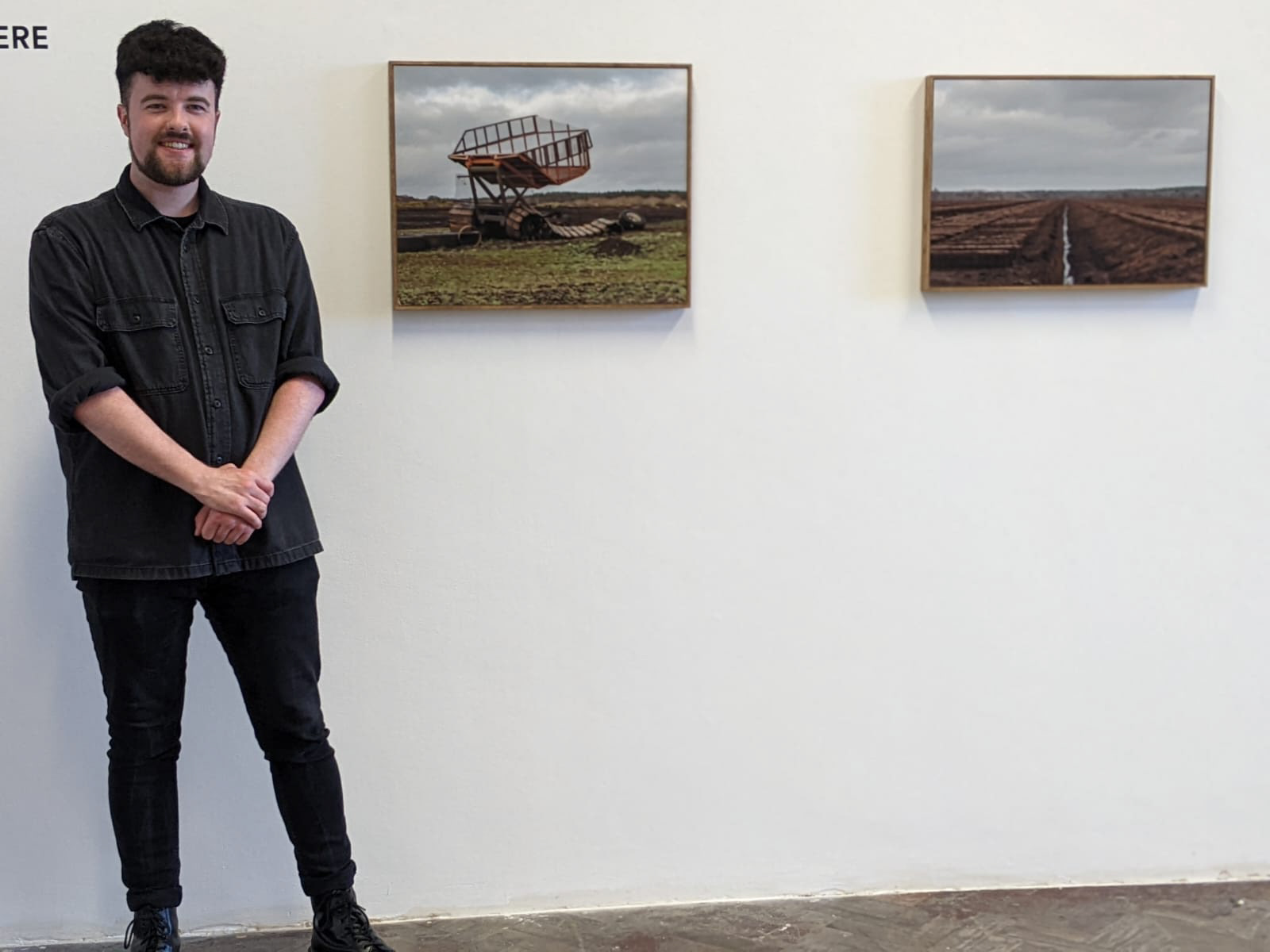
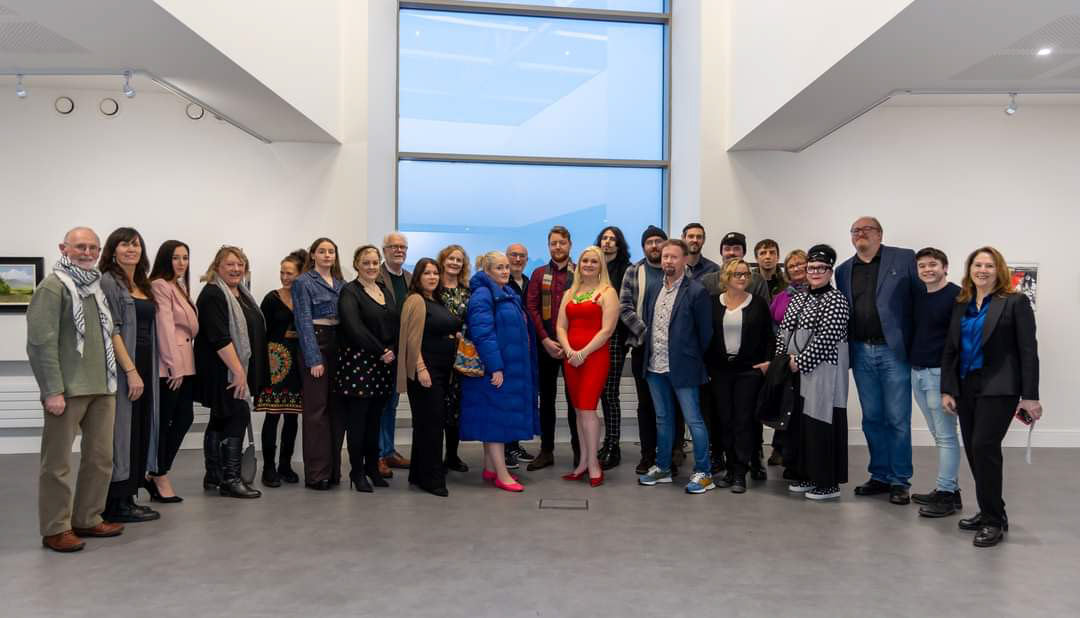
Photo by Paul Moore
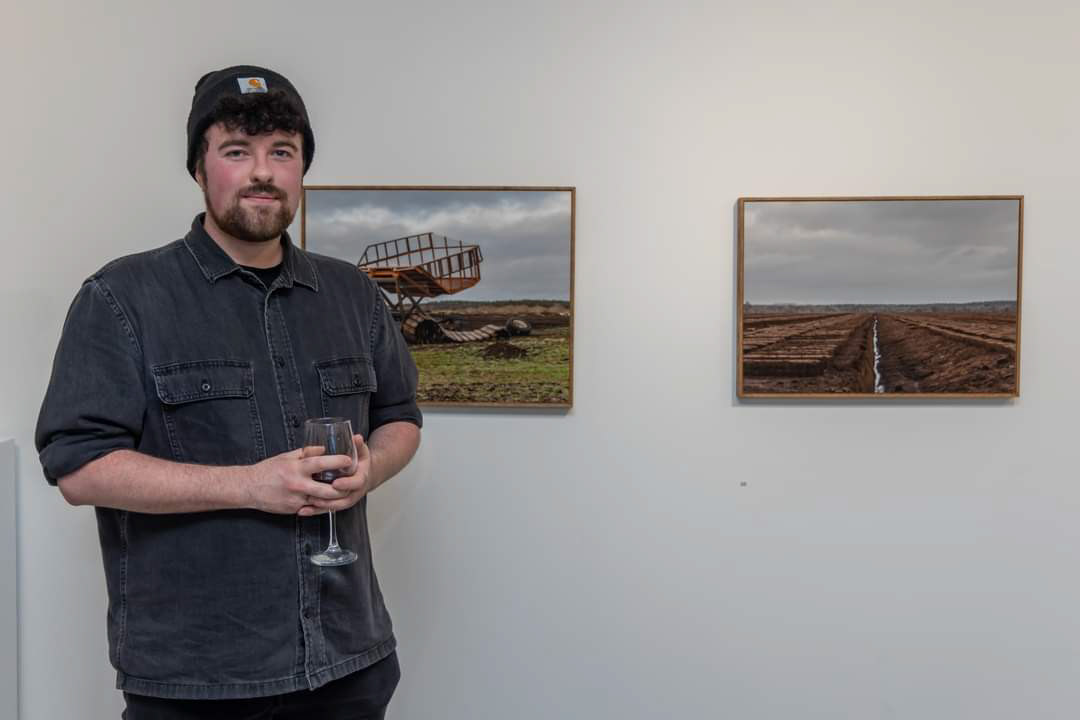
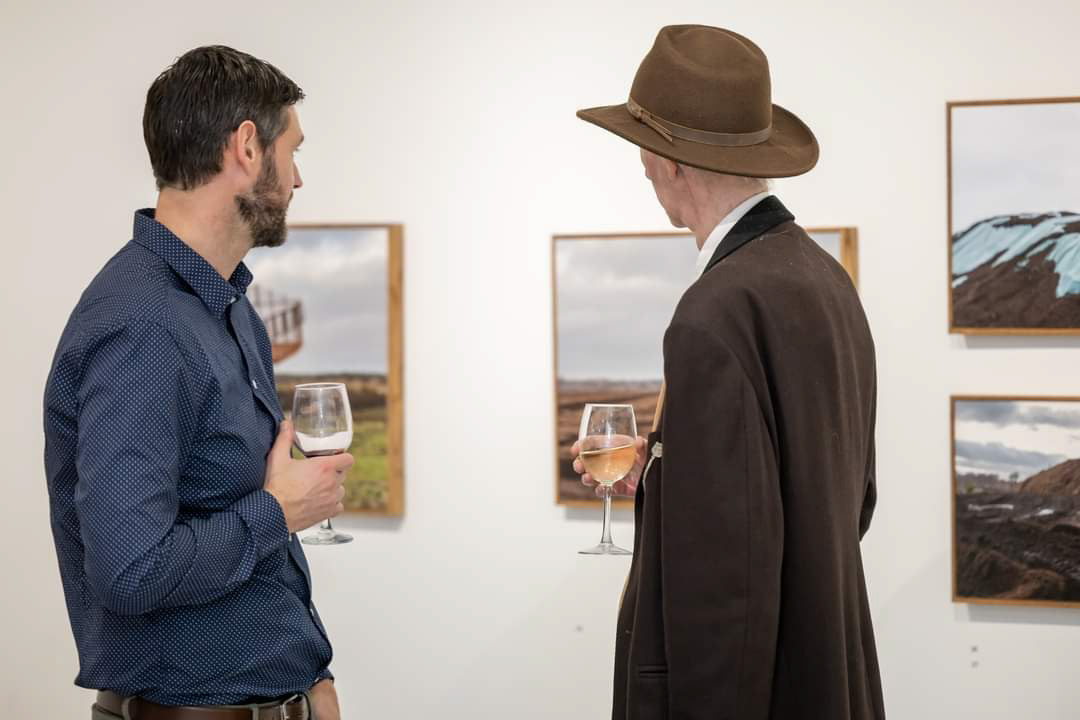
Photo by Paul Moore
